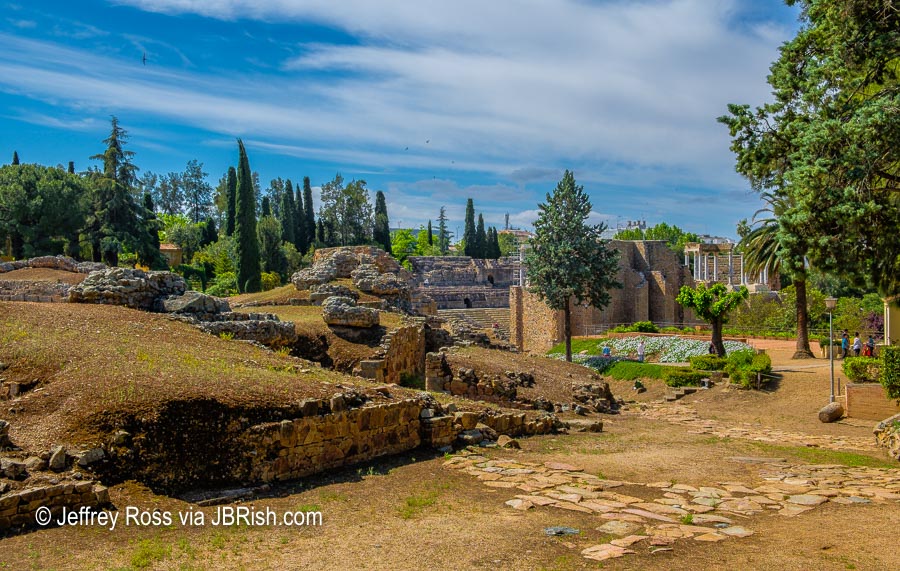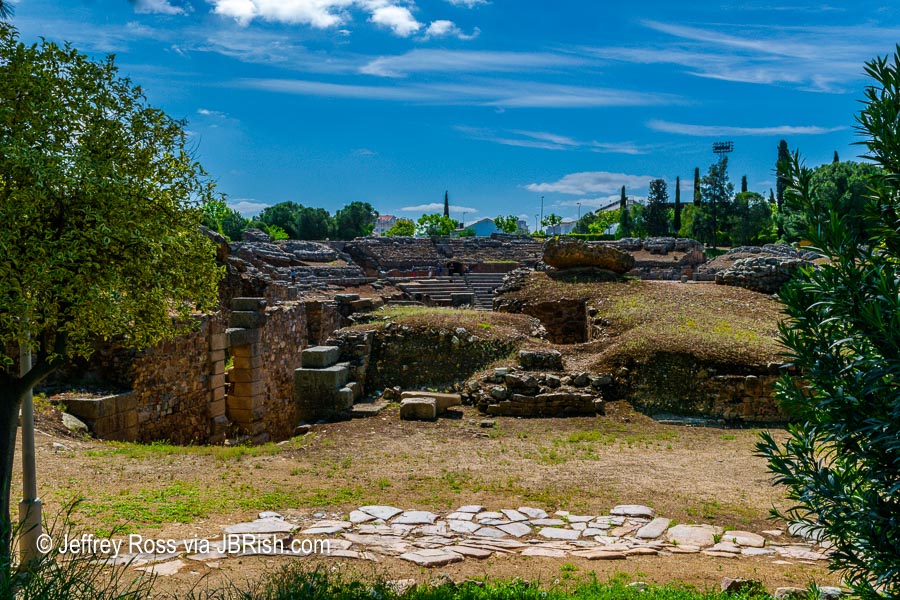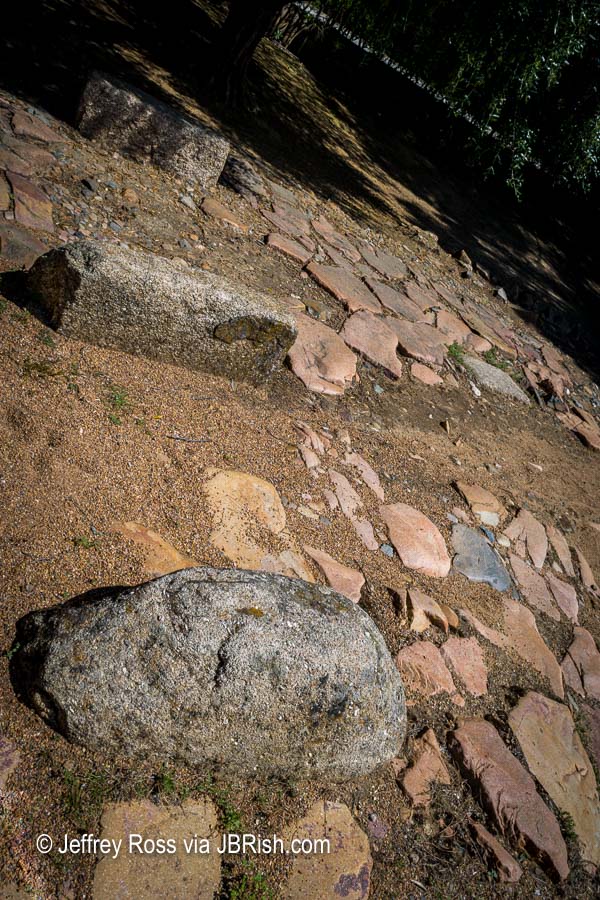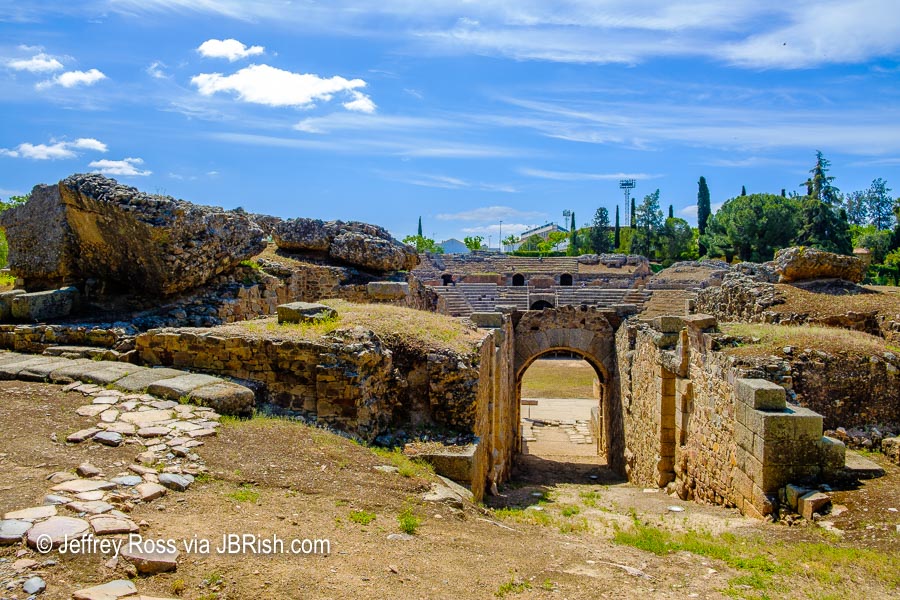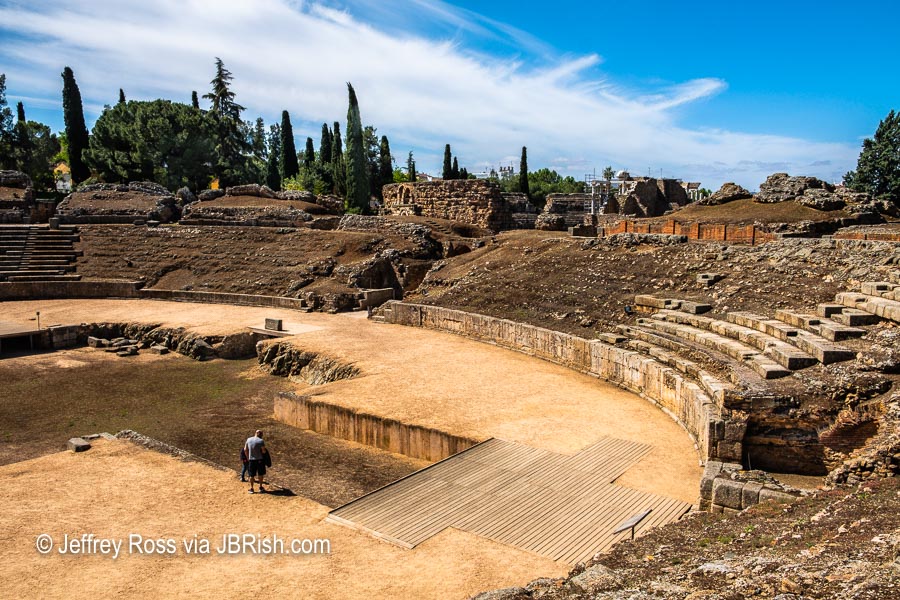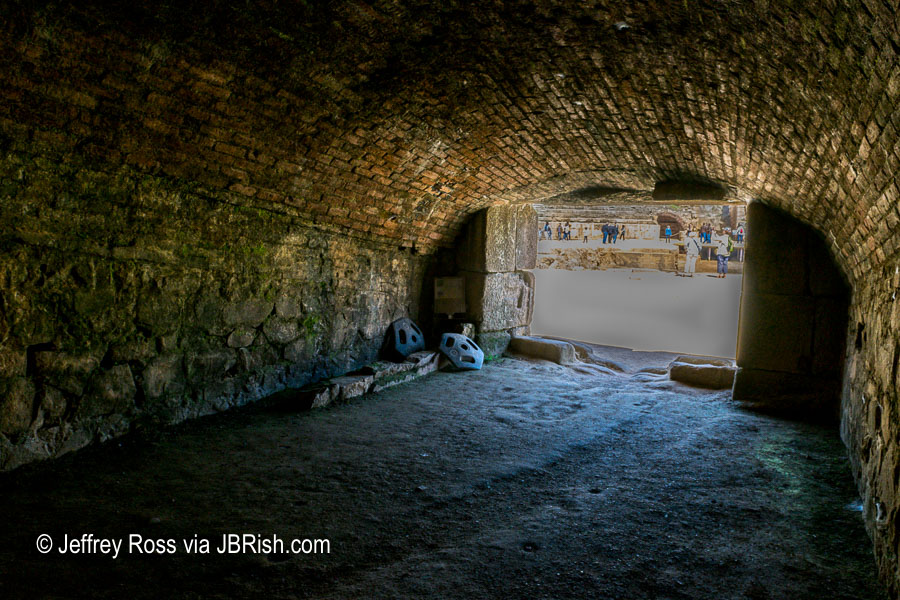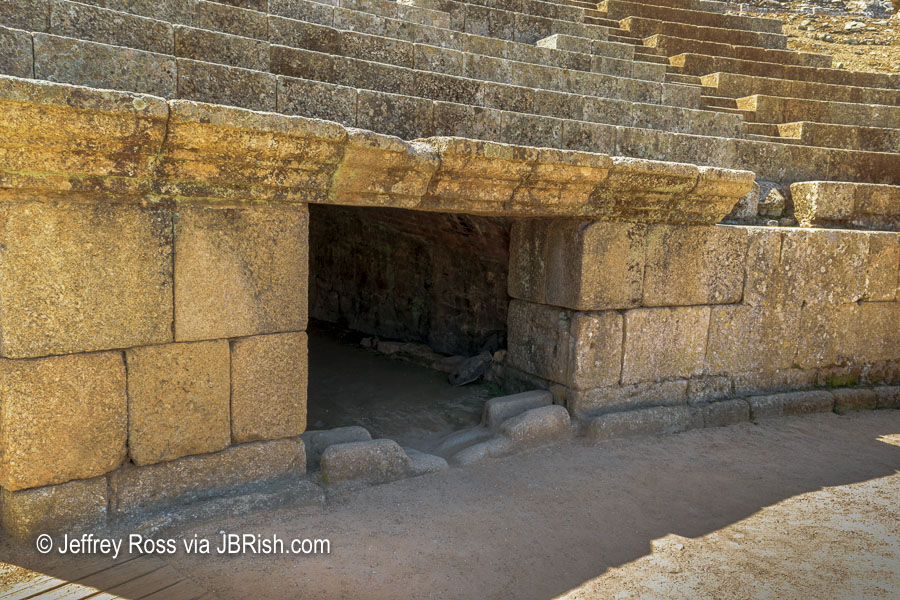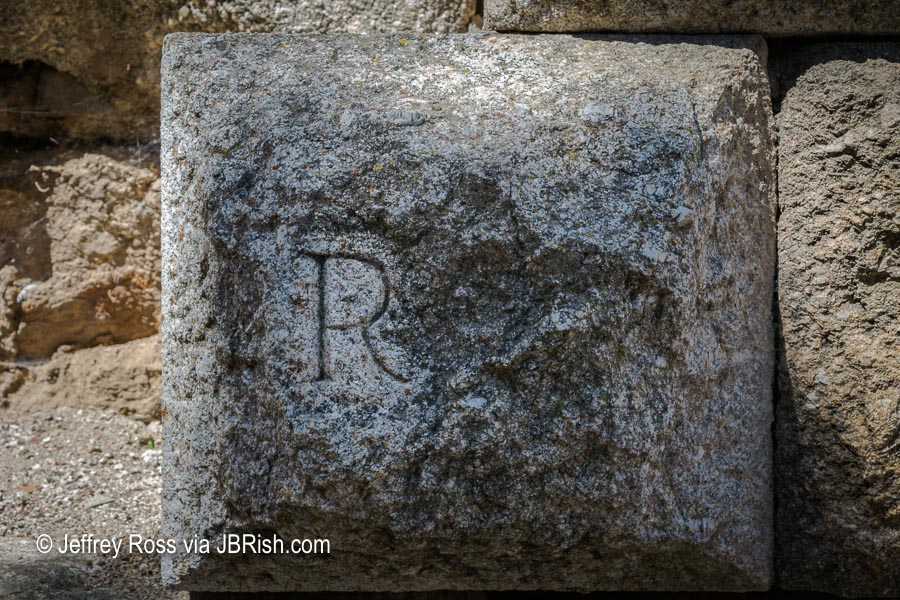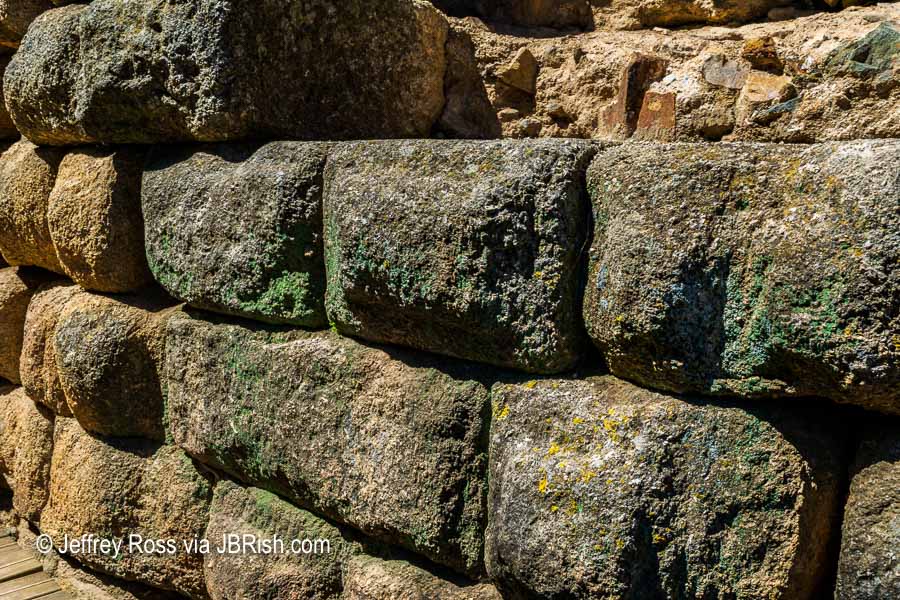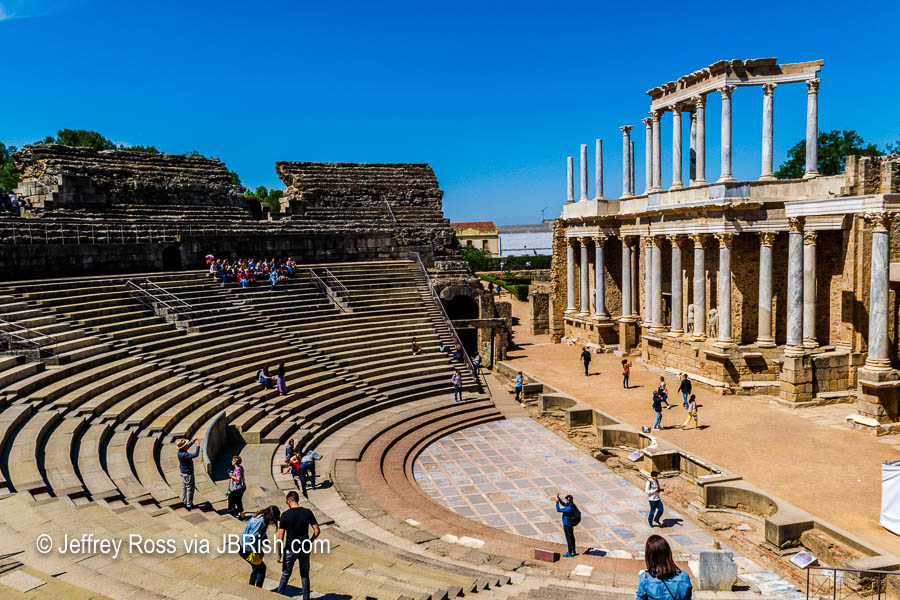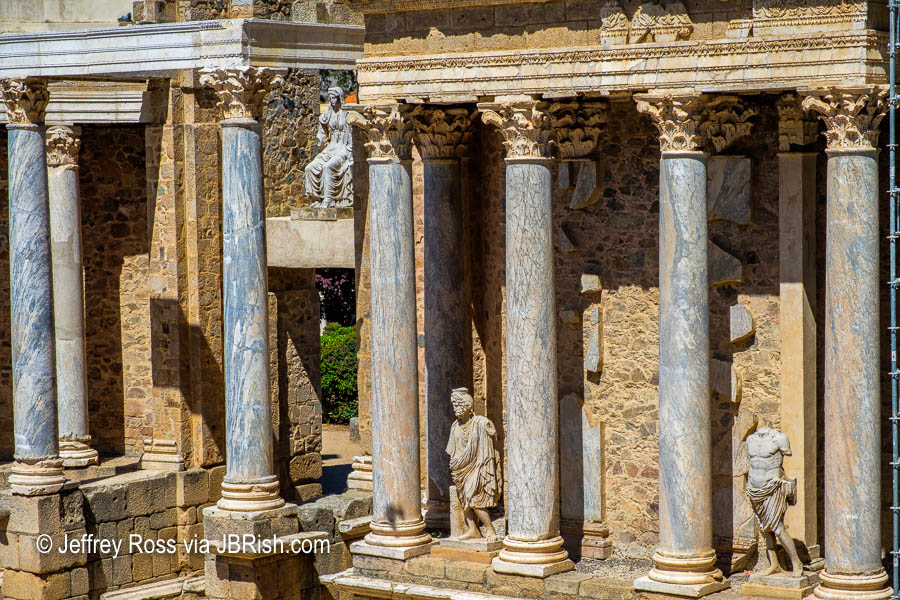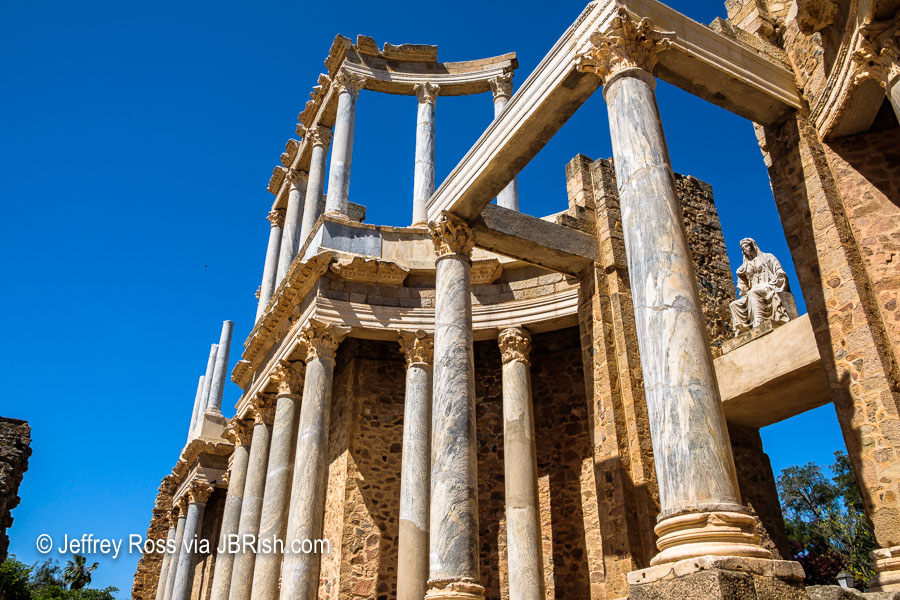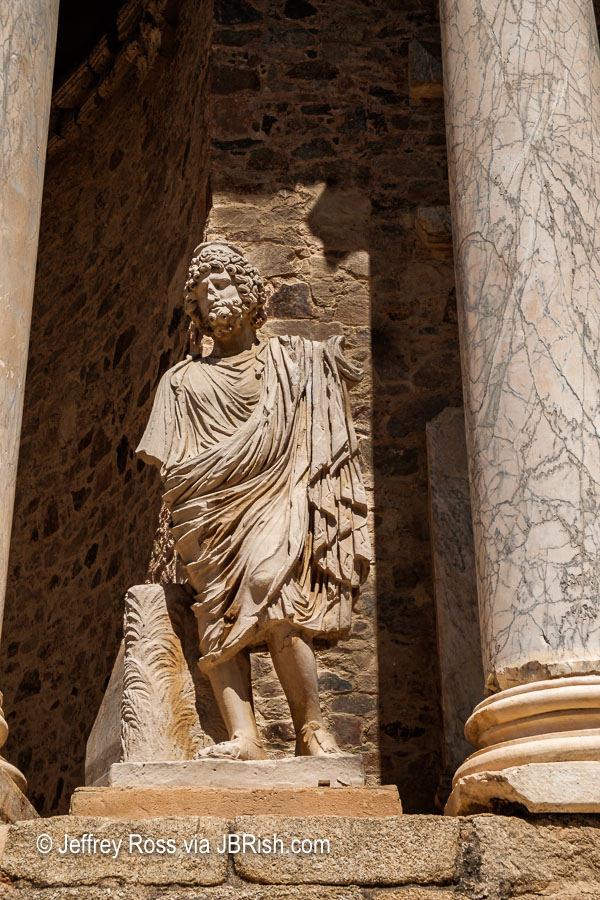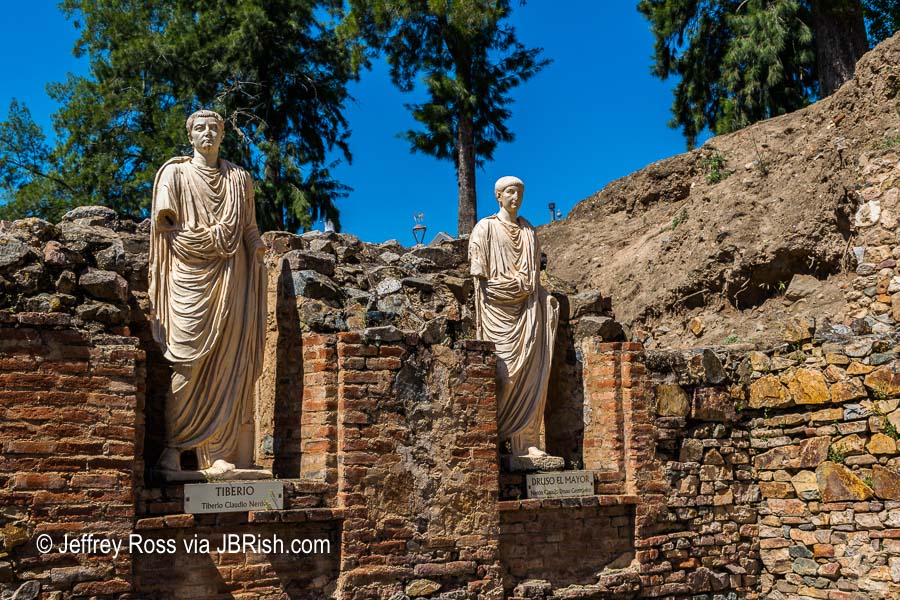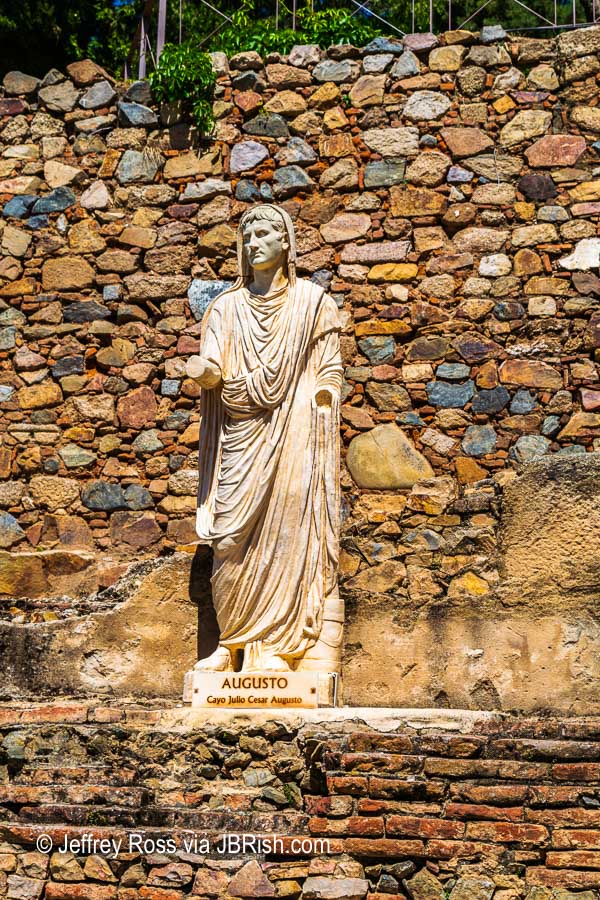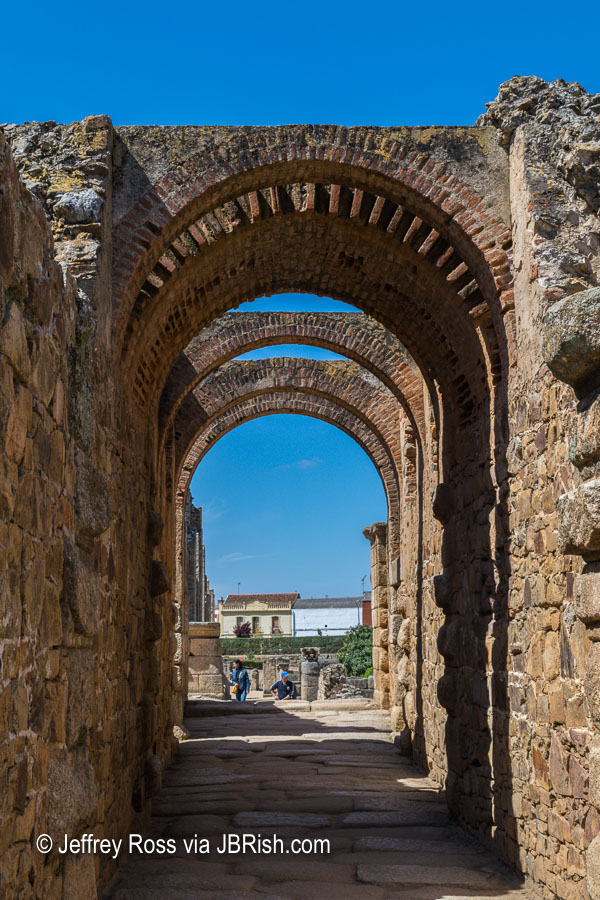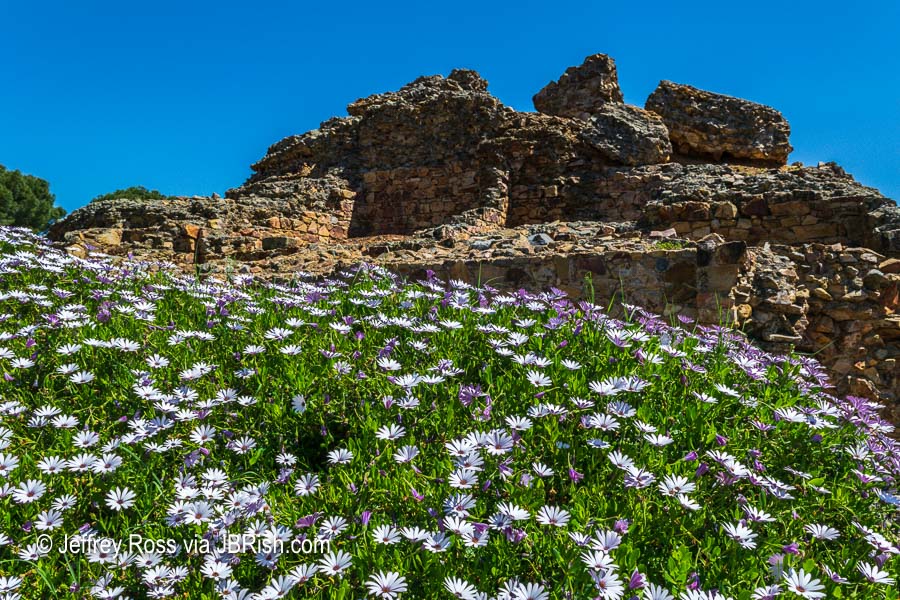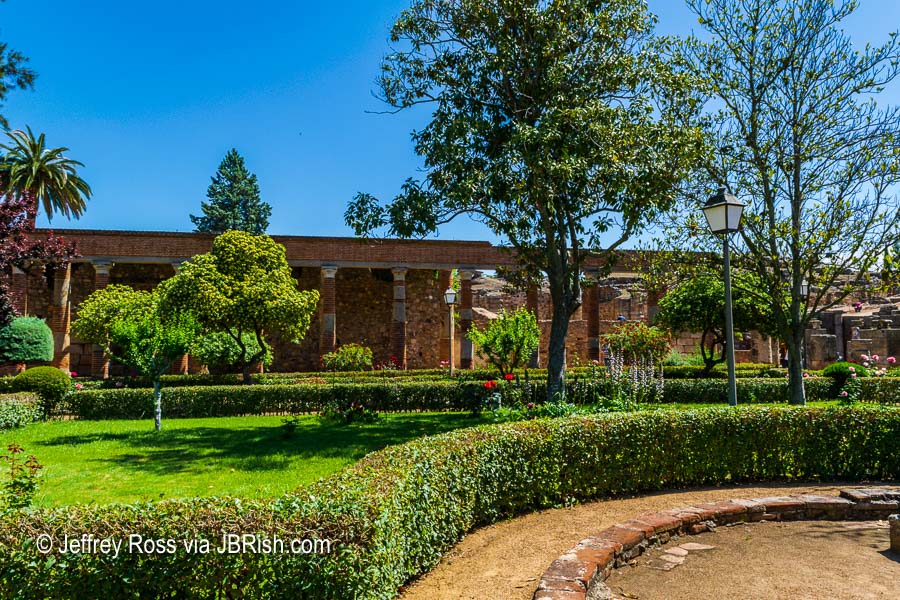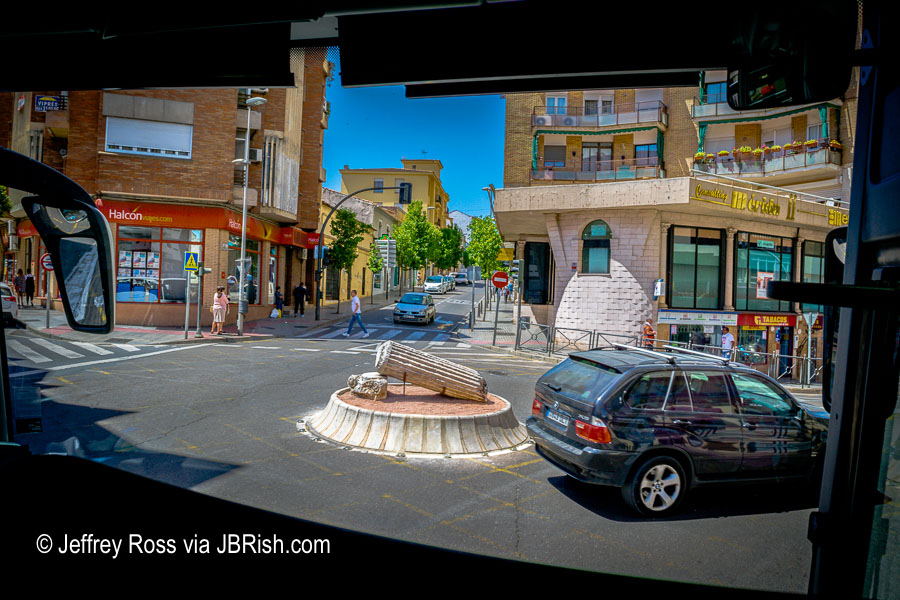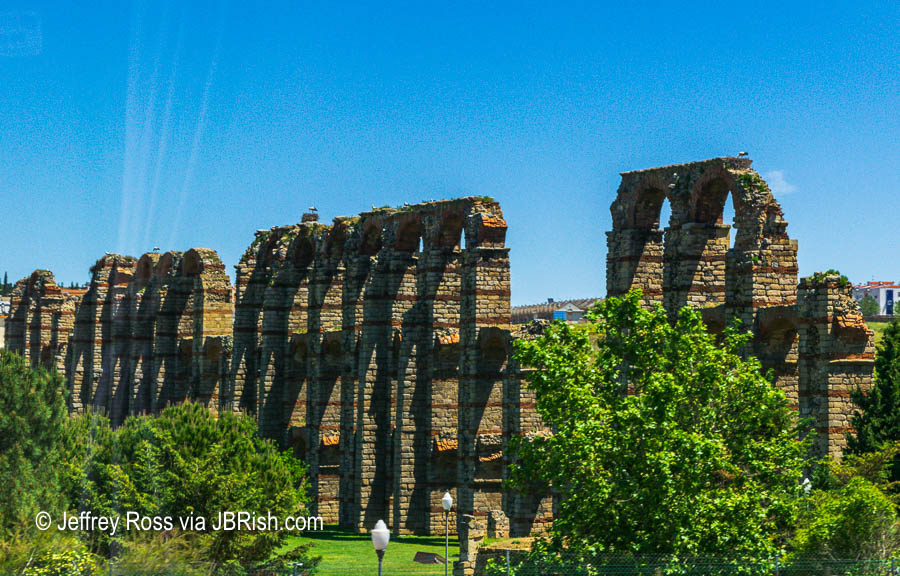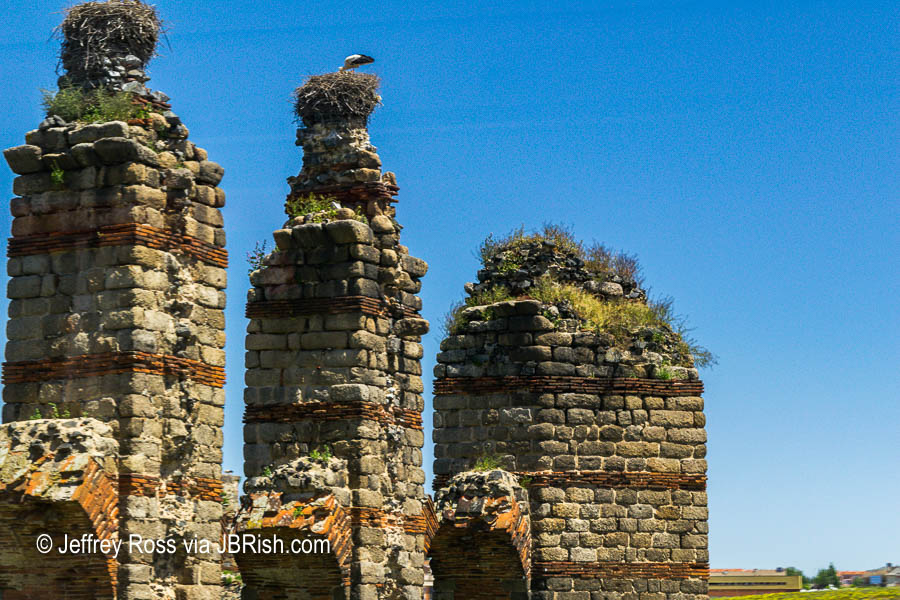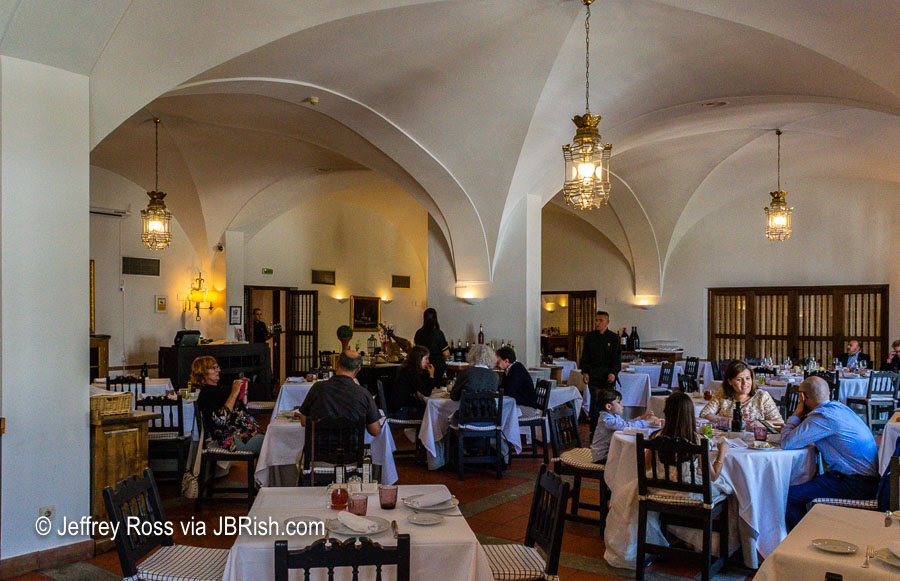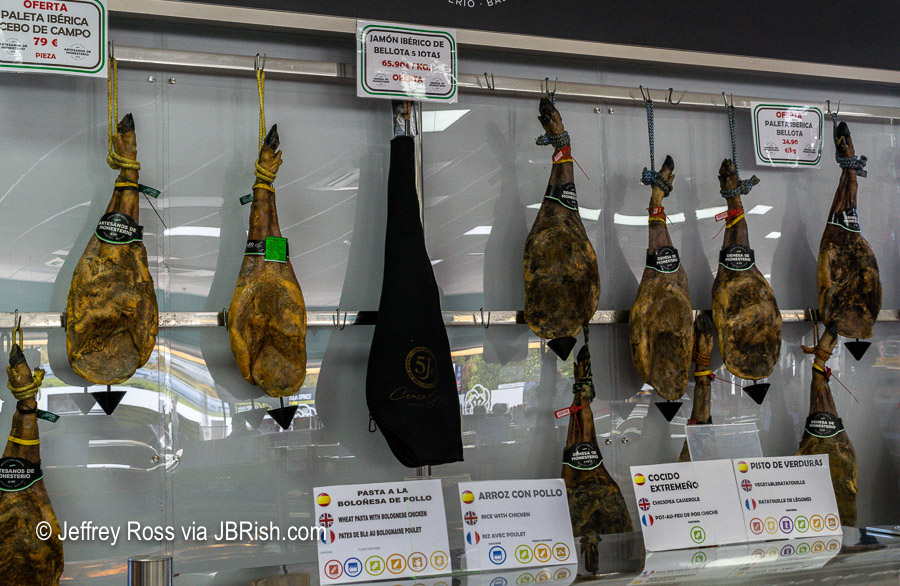
Pula, the largest city on the Istrian Peninsula in Croatia, is a major tourist destination. The most iconic landmark is the Amphitheater built by the Romans under the reign of Emperor Vespasian during the first century AD.
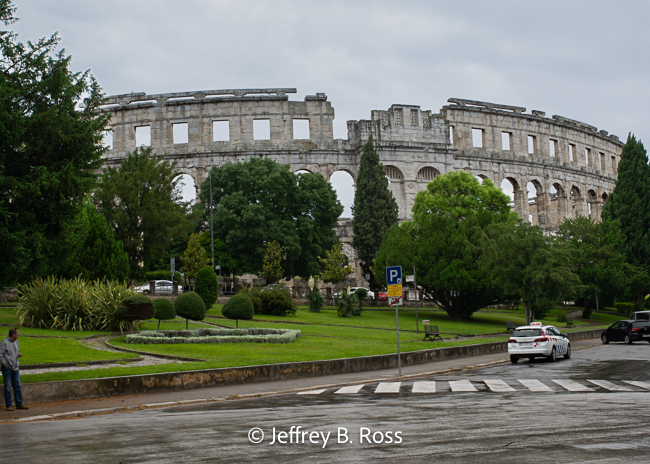
Originally constructed on the outskirts of town, it now finds a place among more contemporary buildings and parks.

The Amphitheater has been given the nickname of the Arena because of the sand covering the floor of the structure.

According to Wikipedia, the Pula Amphitheater is the only one in the world that has all four side towers intact.
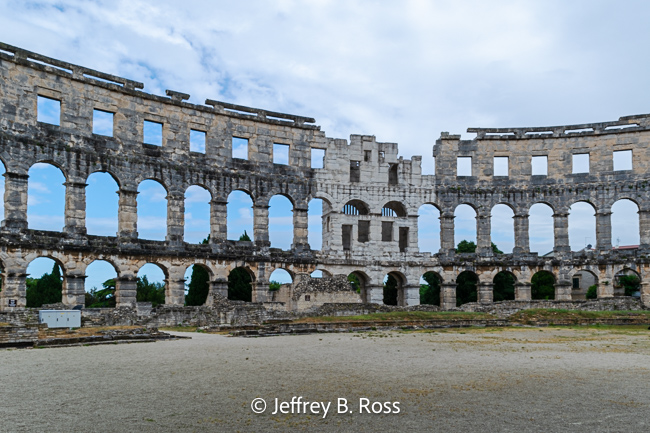
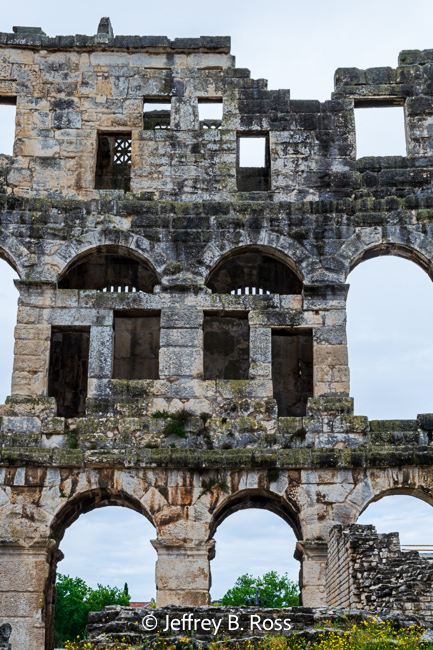
Considering the age of the Amphitheater, it is amazing that the walls are still standing in “relatively good” condition.
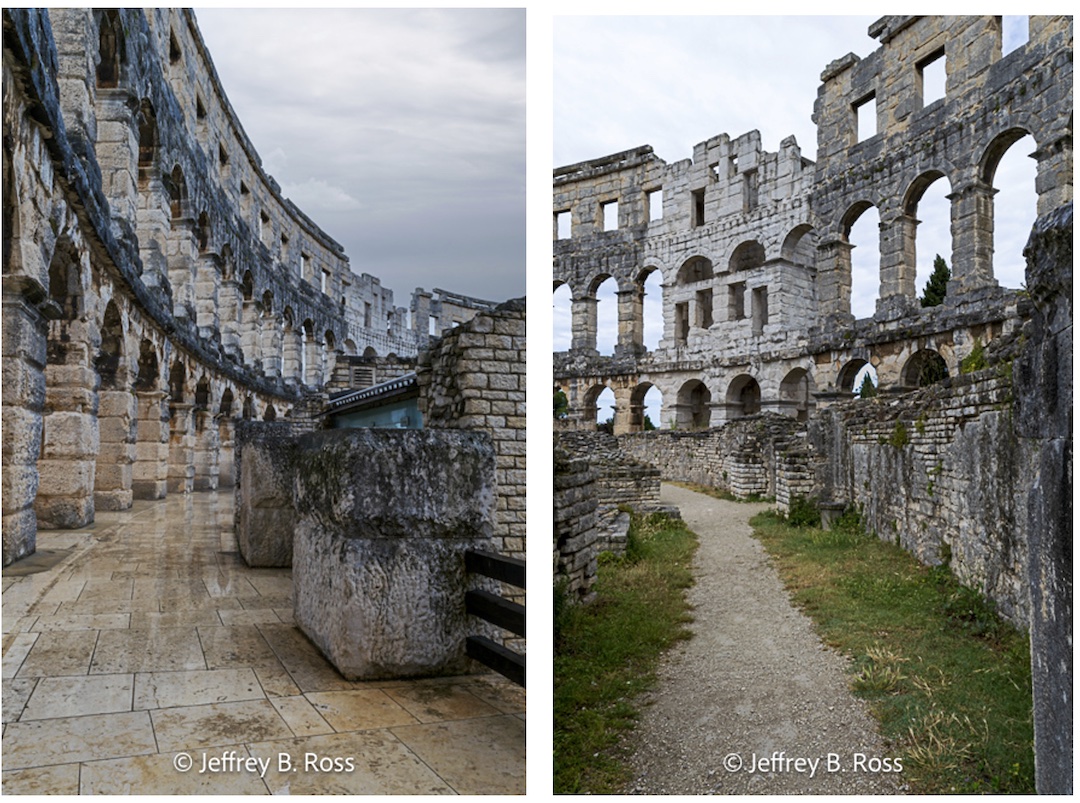
As visitors walk around and through the infrastructure, they can easily imagine long-gone attendees sitting on stone benches.

Among the artifacts in the subterranean gallery is a wall of aged jugs.

Built between 1929 and 1931, St. Anthony’s Church stands in sharp contrast to the Arena and would probably be considered an “architectural infant” within that comparative framework.
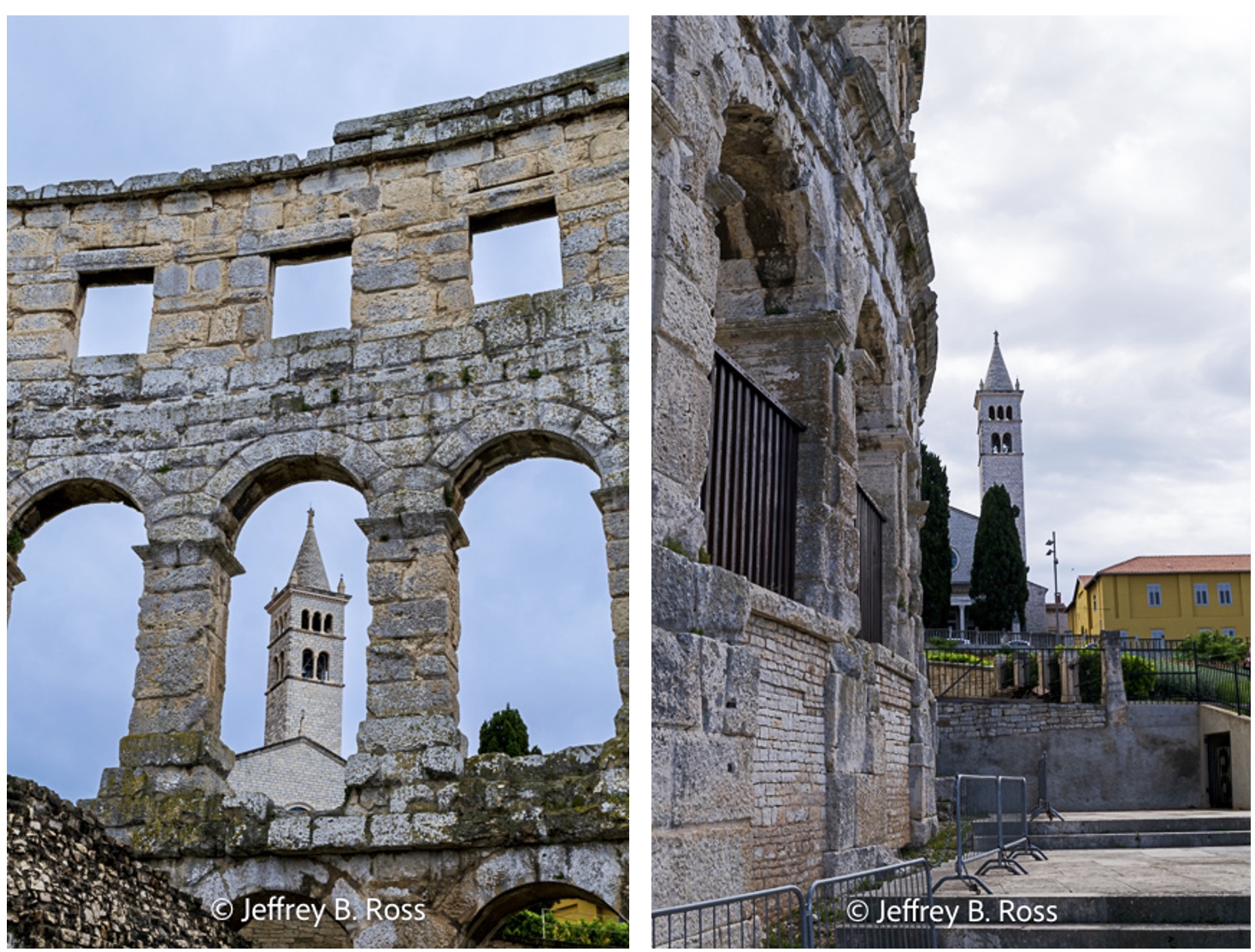
Although the Amphitheater is ancient, the ability to seat 5,000 attendees enables it to serve as a venue for current film festivals, sporting events and concerts.
Another ancient structure in Pula, built between 29-27 BC, is the Roman Triumphal Arch of the Sergii which leads to Pula’s Old Town. The arch, originally constructed as a city gate, was built to commemorate the three Sergii brothers who were participants in the naval Battle of Actium.
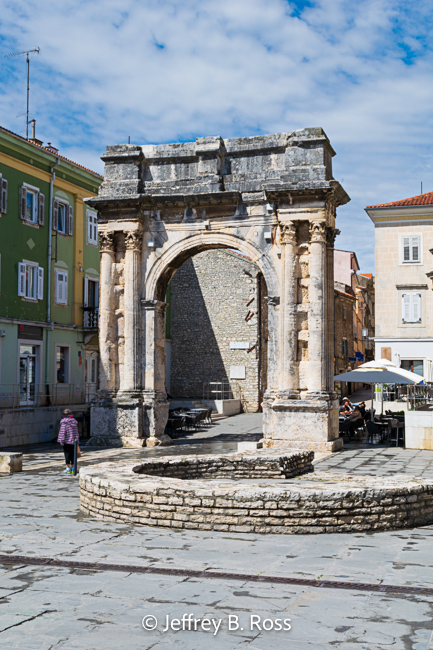
Old Town has a main street lined with many merchants. Closer to the center, there is a picturesque side street with a number of restaurants.
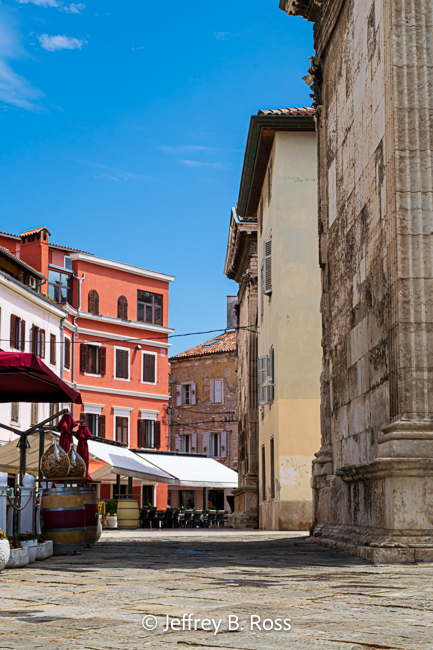
The town center originally served as a meeting place and is currently used to host public events.

The Temple of Augustus is pictured on the left of Forum Square. The town hall, partially shown on the right, stands where the Temple of Diana stood during medieval times.
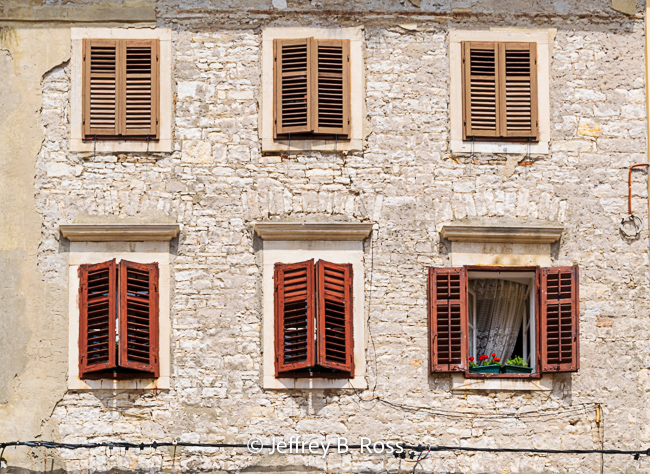
A number of Old Town buildings show signs of retrofitting to accommodate more modern lifestyles.
Perhaps a lesser known arch is the Porta Gemina (Twin Gates), a city gate built by the Romans between the 2nd and 3rd century as part of they city wall which had ten portals of entry.
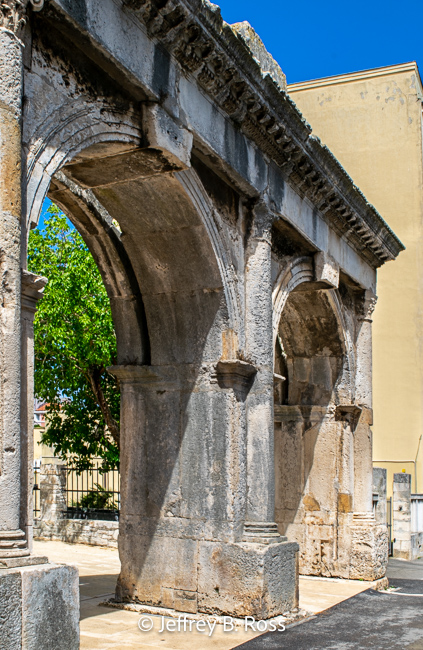
Next stop – Our tour of Croatia nears the end in the stunning fishing port of Rovinj!
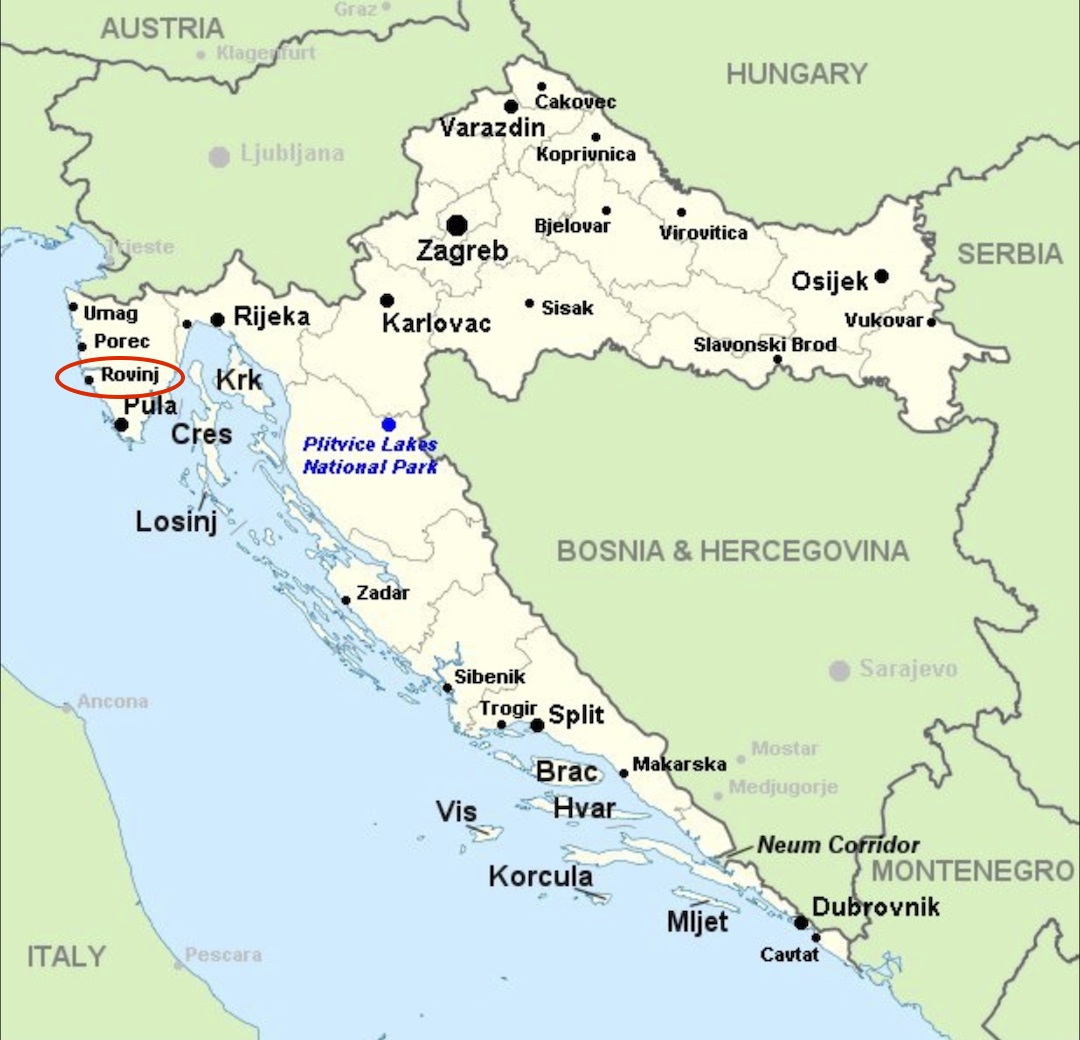
Rovinj
See Previous Posts in this series:
Dubrovnik, Croatia – Pearl of the Adriatic
Old Town Dubrovnik – Above it all
Old Town Dubrovnik – The Low Down
Dubrovnik from the Adriatic and Mt. Srd
Montenegro & The Walled City of Kotor
Mostar – Bosnia and Herzegovina
Coastal City of Split, Croatia
Zagreb – Capital City of Croatia
Ljubljana – Capital of Slovenia
Slovenia – Cookies, Castle, Caves and Cuisine
